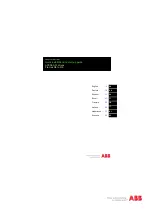
In the event of an alarm, the Adjustable frequency drive
will have tripped. Alarms must be reset to restart operation
once their cause has been rectified.
This may be done in four ways:
1.
By using the [RESET] control button on the LCP.
2.
Via a digital input with the “Reset” function.
3.
Via serial communication/optional serial
communication bus.
4.
By resetting automatically using the [Auto Reset]
function, which is a default setting for VLT
®
HVAC
Drive, see
14-20 Reset Mode
in the
FC 100
Programming Guide MGxxyy
NOTE!
After a manual reset using the [RESET] button on the LCP,
the [Auto On] or [Hand On] button must be pressed to
restart the motor.
If an alarm cannot be reset, the reason may be that its
cause has not been rectified, or the alarm is trip-locked
(see also
Table 8.44
).
CAUTION
Alarms that are trip-locked offer additional protection,
means that the line power supply must be switched off
before the alarm can be reset. After being switched back
on, the Adjustable frequency drive is no longer blocked
and may be reset as described above once the cause has
been rectified.
Alarms that are not trip-locked can also be reset using the
automatic reset function in
14-20 Reset Mode
(Warning:
automatic wake-up is possible!)
If a warning and alarm is marked against a code in the
table on the following page, this means that either a
warning occurs before an alarm, or it can be specified
whether it is a warning or an alarm that is to be displayed
for a given fault.
This is possible, for instance, in
1-90 Motor Thermal
Protection
. After an alarm or trip, the motor carries on
coasting, and the alarm and warning flash on the
Adjustable frequency drive. Once the problem has been
rectified, only the alarm continues flashing.
NOTE!
No missing motor phase detection (no 30-32) and no stall
detection is active when
1-10 Motor Construction
is set to
[1] PM non-salient SPM.
No. Description
Warning Alarm/
Trip
Alarm/Trip Lock
Parameter Reference
1
10 Volts low
X
2
Live zero error
(X)
(X)
6-01
3
No motor
(X)
1-80
4
Mains phase loss
(X)
(X)
(X)
14-12
5
DC link voltage high
X
6
DC link voltage low
X
7
DC overvoltage
X
X
8
DC undervoltage
X
X
9
Inverter overloaded
X
X
10
Motor ETR overtemperature
(X)
(X)
1-90
11
Motor thermistor over temperature
(X)
(X)
1-90
12
Torque limit
X
X
13
Overcurrent
X
X
X
14
Earth fault
X
X
X
15
Hardware mismatch
X
X
16
Short Circuit
X
X
17
Control word timeout
(X)
(X)
8-04
18
Start failed
X
23
Internal Fan Fault
X
24
External Fan Fault
X
14-53
25
Brake resistor short-circuited
X
26
Brake resistor power limit
(X)
(X)
2-13
27
Brake chopper short-circuited
X
X
28
Brake check
(X)
(X)
2-15
General Specifications and ...
VLT
®
HVAC Drive Design Guide
MG11BB22 - VLT
®
is a registered Danfoss trademark
8-29
8
8
















































